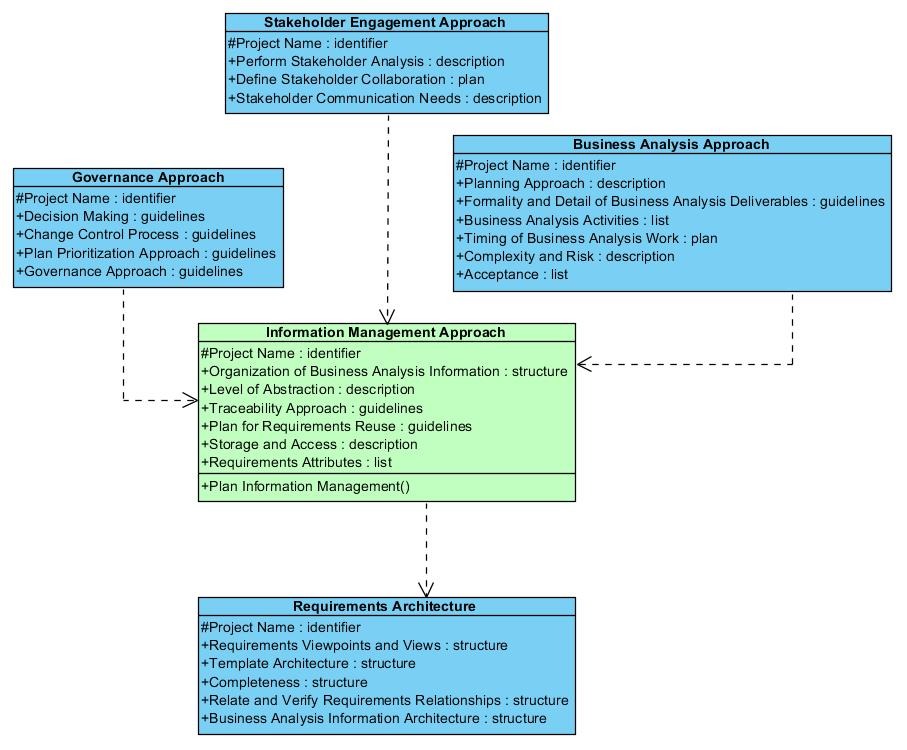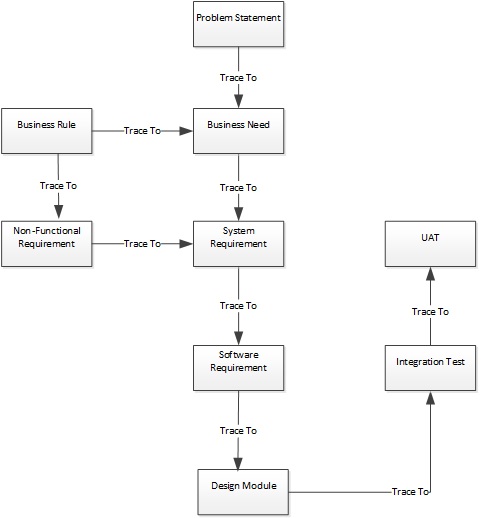Information Management Approach
A project Information Management Approach document defines how business analysis information will be stored, Packaged, accessed, used and communicated during the project.


The Information Management Approach receives data input from the Business Analysis Approach, The Governance Approach and the Stakeholder Engagement Approach. It provides input to the Requirements Architecture.
Details
The Information Management Approach contains 7 attributes and 1 operation:
Project Name - Identifies the project information.
Organization of Business Analysis Information - Defines the information structure in the form of a description with supporting diagrams.
Level of Abstraction – A description of the amount of detail that is contained in the information.
Traceability Approach – A definition of how traceability between information content will be managed.
Plan for Requirements Reuse – A plan for reusing requirements past the life of the project.
Storage and Access – A description of the tools used to store and access information including access permissions.
Requirements Attributes – A list of attributes that contain the requirement information.
The Information Management Approach artifact is created by the Plan Information Management task.
Example
Information management approach.


Traceability Approach
Information Organization
Organization of information will be with Microsoft SharePoint according to the information architecture model guidelines.
Level of Abstraction
See the repository description or document overview for details about its content.
Plan for Requirements Reuse
Capture business processes with use cases. The processes are re-used across the organization, but the details of the use case may vary.
Capture regulatory and governance requirements in an enterprise repository and refence those that apply to the project.
Storage And Access
Standard access rights and security for SharePoint will apply to the project.
Requirements Attributes
Requirement Type, Requirement Identifier, Description, Acceptance Criteria, Priority, Complexity, Release, Status.